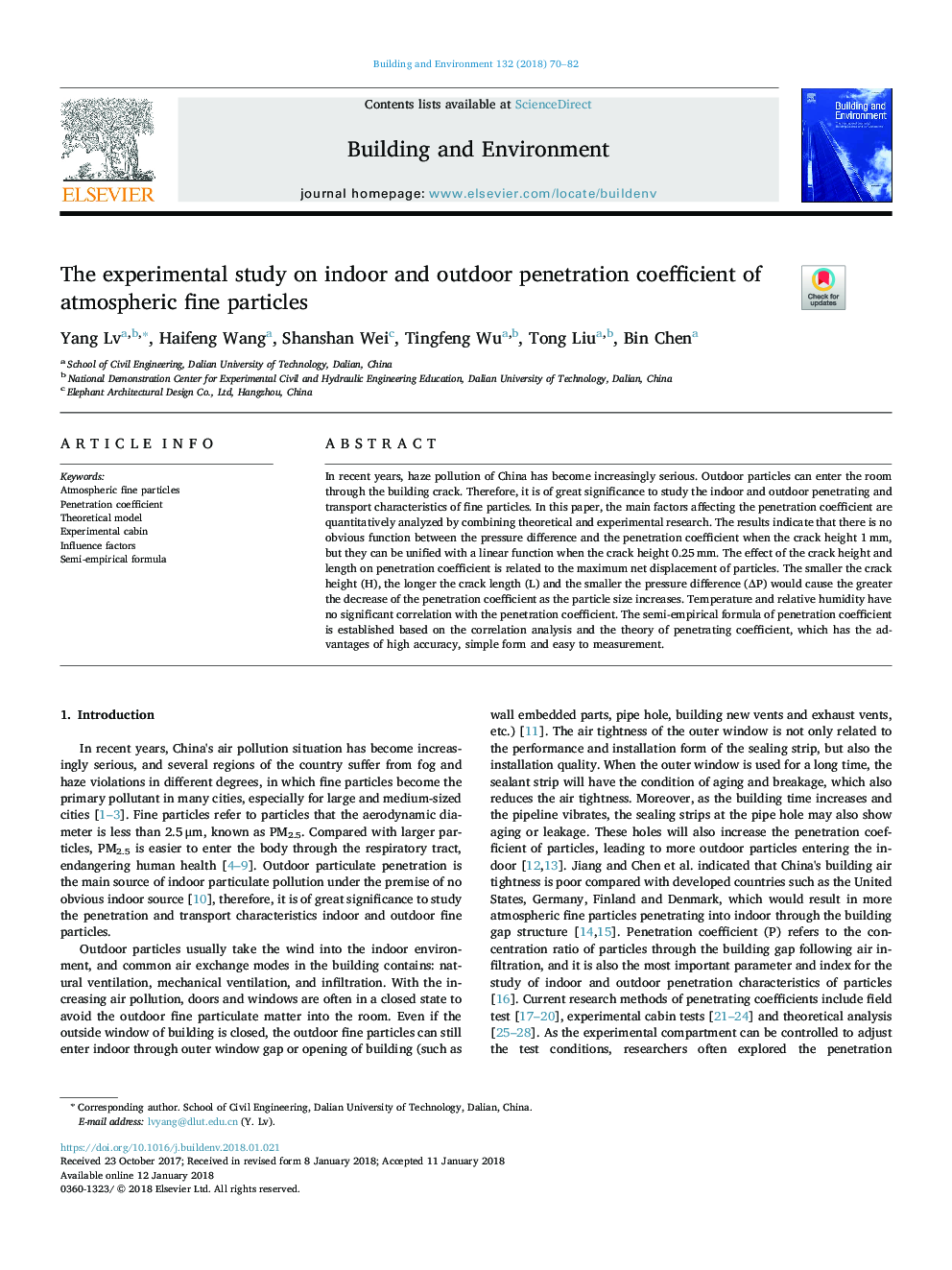| Article ID | Journal | Published Year | Pages | File Type |
|---|---|---|---|---|
| 6697863 | Building and Environment | 2018 | 13 Pages |
Abstract
In recent years, haze pollution of China has become increasingly serious. Outdoor particles can enter the room through the building crack. Therefore, it is of great significance to study the indoor and outdoor penetrating and transport characteristics of fine particles. In this paper, the main factors affecting the penetration coefficient are quantitatively analyzed by combining theoretical and experimental research. The results indicate that there is no obvious function between the pressure difference and the penetration coefficient when the crack height 1â¯mm, but they can be unified with a linear function when the crack height 0.25â¯mm. The effect of the crack height and length on penetration coefficient is related to the maximum net displacement of particles. The smaller the crack height (H), the longer the crack length (L) and the smaller the pressure difference (ÎP) would cause the greater the decrease of the penetration coefficient as the particle size increases. Temperature and relative humidity have no significant correlation with the penetration coefficient. The semi-empirical formula of penetration coefficient is established based on the correlation analysis and the theory of penetrating coefficient, which has the advantages of high accuracy, simple form and easy to measurement.
Related Topics
Physical Sciences and Engineering
Energy
Renewable Energy, Sustainability and the Environment
Authors
Yang Lv, Haifeng Wang, Shanshan Wei, Tingfeng Wu, Tong Liu, Bin Chen,
